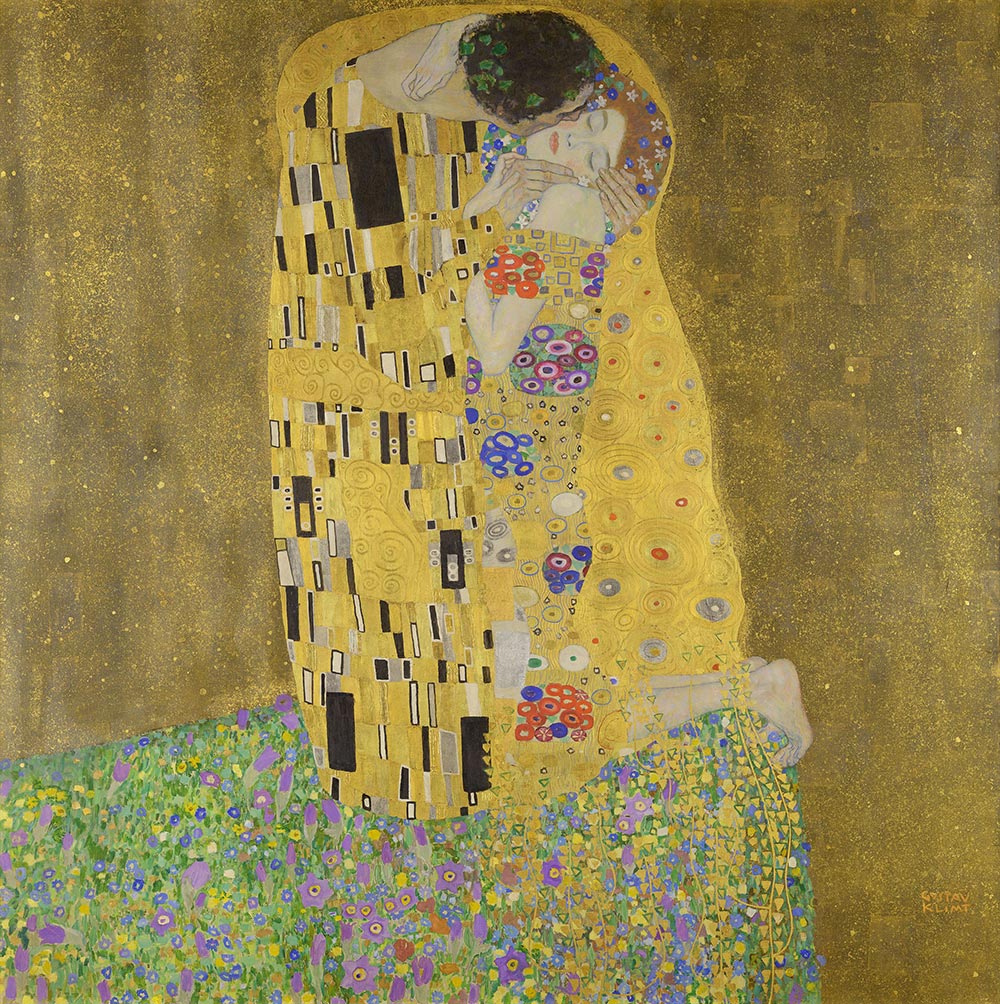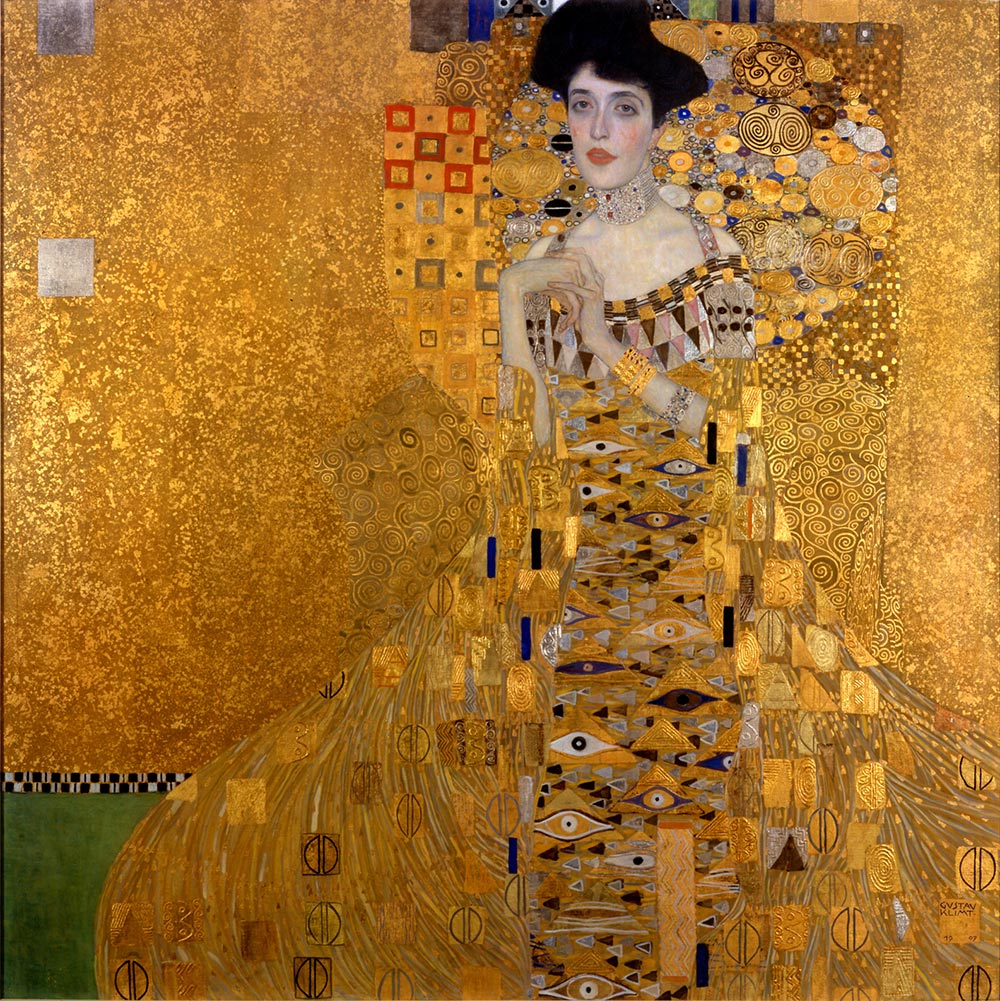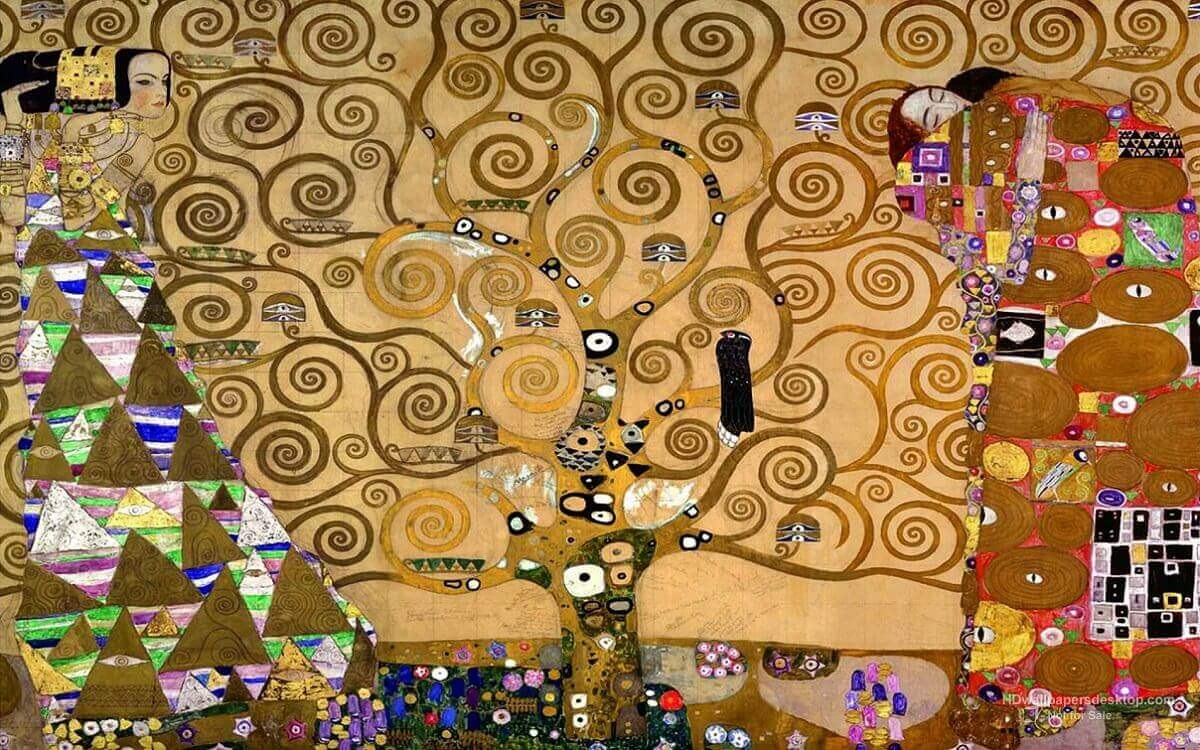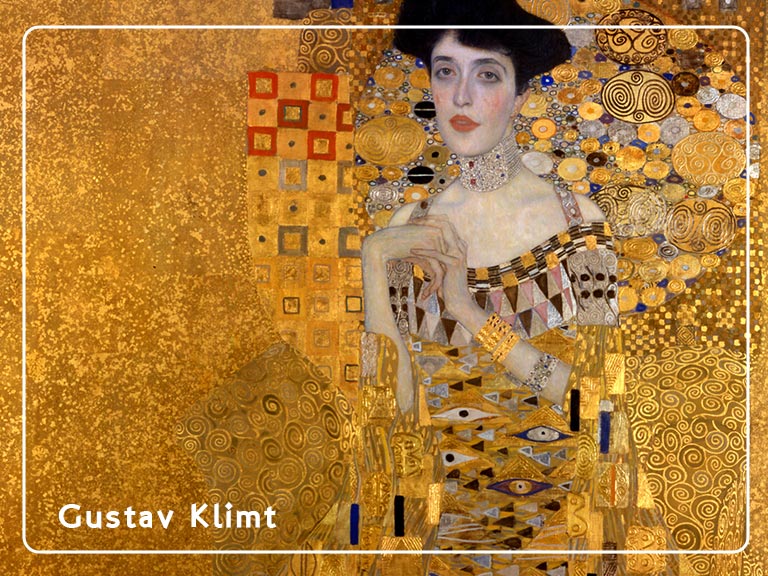Gustav Klimt, a renowned Austrian artist of the late 19th and early 20th centuries, is celebrated for his opulent and distinctive style that combined elements of Symbolism and Art Nouveau. Born on July 14, 1862, in Baumgarten, near Vienna, Klimt’s artistic journey took him to the forefront of the Viennese art scene. In this blog post, we will delve into the life and works of Gustav Klimt, exploring his artistic evolution, his notable pieces, and the enduring legacy he left behind.
Gustav Klimt was raised in a family of artists and craftsmen, which nurtured his creative talents from a young age. After studying at the Vienna School of Arts and Crafts, he co-founded the Vienna Secession, a movement dedicated to breaking away from conservative artistic conventions and promoting innovative, avant-garde art. Klimt’s work drew inspiration from various sources, including Byzantine mosaics, Japanese prints, and ancient Egyptian and Greek art.
Klimt’s symbolic and allegorical paintings became a hallmark of his artistic style. One of his most famous works, “The Kiss” (1907-1908), exemplifies his mastery of symbolism and sensuality. The painting portrays a couple embracing in a tender and passionate moment, adorned with intricate patterns and golden hues that became synonymous with Klimt’s style. “The Kiss” is housed at the Österreichische Galerie Belvedere in Vienna.

Another notable work, “Portrait of Adele Bloch-Bauer I” (1907), showcases Klimt’s talent for creating mesmerizing portraits. This portrait of a wealthy Viennese socialite is characterized by ornate patterns, lavish gold leaf, and meticulous attention to detail. The painting, often referred to as the “Woman in Gold,” garnered international acclaim and can be admired at the Neue Galerie in New York City.

Landscapes and Nature:
While Klimt is widely known for his portraits, he also ventured into landscape painting, infusing his unique style into the depiction of natural scenes. “The Tree of Life” (1905) is a captivating example of Klimt’s landscapes, featuring a majestic tree with branches adorned by colourful, organic patterns. This artwork symbolises the connection between humans and the natural world, and it can be viewed at the Museum of Applied Arts in Vienna.

Legacy and Significance:
Gustav Klimt’s legacy lies in his ability to transcend conventional artistic boundaries and create visually captivating and emotionally evocative works. His art challenged societal norms and expressed a profound sense of sensuality, spirituality, and beauty. Klimt’s influence on the Viennese art scene and the broader Art Nouveau movement continues to resonate today, inspiring artists and captivating art enthusiasts worldwide.
Gustav Klimt, with his distinctive style and passion for symbolism, remains an icon of Viennese art. His exquisite portraits, such as “The Kiss” and “Portrait of Adele Bloch-Bauer I,” continue to captivate viewers with their opulence and sensuality. Klimt’s exploration of landscapes and nature in works like “The Tree of Life” adds further depth to his artistic repertoire. Through his evocative and visually stunning artworks, Gustav Klimt’s enduring legacy as a visionary artist continues to enchant and inspire generations.
If you would like to receive a roundup of all of our blog posts once a week to keep you inspired in your inbox, why not sign up to our newsletter. You can access our sign up at the top of our page. If you are a London Art College student and you would like your artwork featured here, drop us a line at any time.


Thank you.😊 💓